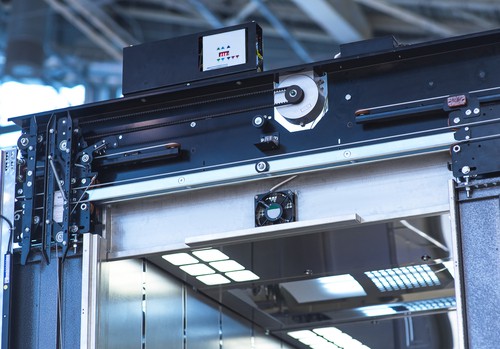Advanced Lift Modernization-- Upgrade Your Lifts for Better Effectiveness and Security
Advanced Lift Modernization-- Upgrade Your Lifts for Better Effectiveness and Security
Blog Article
Vital Guide to Understanding Disabled Platform Lifts and Their Functionality
Comprehending the ins and outs of impaired platform raises goes beyond mere awareness; it needs an extensive grasp of their capability and design. From the different types available to the vital parts that make them operational, each aspect adds to the smooth operation of these crucial access devices. Furthermore, the strict safety and security regulations and upkeep considerations connected with platform lifts are critical in guaranteeing their dependability and long life. By checking out these aspects in information, one can gain a profound understanding of how these lifts not only boost ease of access however additionally prioritize individual security and convenience.
Kinds Of Handicapped System Lifts
There are numerous kinds of impaired platform raises designed to provide access for individuals with flexibility challenges. Vertical system lifts are a preferred option as they move directly up and down, making them excellent for much shorter distances and where space is limited. These lifts are typically installed in homes, schools, and industrial structures to assist wheelchair customers in navigating various levels. Inclined system lifts, on the various other hand, appropriate for places where a vertical lift might not be practical because of building restrictions. These lifts adhere to the slope of stairs, providing a smooth and secure experience for people with mobility concerns.
An additional type of impaired system lift is the mobile lift, which uses adaptability and ease. These lifts can be quickly moved from one area to one more, making them perfect for short-term events or situations where an irreversible installment is not feasible. Furthermore, outside platform lifts are developed to endure varying weather, permitting individuals to accessibility outside rooms effortlessly and self-reliance. Each type of impaired platform lift serves an one-of-a-kind function in enhancing availability and enhancing the quality of life for people with wheelchair obstacles.
Secret Parts and Mechanisms
Impaired system lifts, such as upright and inclined lifts, count on details crucial elements and devices to guarantee smooth and safe transport for people with wheelchair obstacles. One vital part of these lifts is the platform itself, which offers as the structure for transporting individuals - lift modernization. The system is made to be durable, sizable enough to fit wheelchairs or flexibility tools, and equipped with safety and security attributes such as guardrails and non-slip surface areas to stop accidents throughout transportation

In addition, safety sensing units and emergency stop buttons are integrated right into handicapped system lifts to boost individual safety and security and prevent crashes. These components interact to develop a reputable and effective transportation service for people with flexibility problems.
Setup and Upkeep Considerations

Routine upkeep is similarly important to maintain impaired platform lifts running efficiently. Arranged inspections, lubrication of relocating components, and screening of security features need to be performed according to the manufacturer's advised timetable. Any type of indications of damage ought to be addressed without delay to avoid more damages and make sure the lift operates reliably. Furthermore, having a maintenance log to track solution background and interventions can help in identifying patterns and possible concerns before they intensify. By focusing on proper installation and attentive maintenance practices, the durability and performance of handicapped system lifts can be maximized, benefiting both customers and center managers.
Security Attributes and Rules
Making sure conformity with safety and security laws is critical when examining the performance of safety and security attributes in impaired system lifts. These lifts undergo specific security criteria to safeguard individuals, making it essential for manufacturers he said and operators to stick to these regulations. Security functions commonly located in handicapped platform lifts consist of emergency quit buttons, safety barriers, interlocks, and under-platform sensing units. Emergency quit switches enable instant stopping of the lift in situation of an emergency situation, while safety barriers avoid customers from unintentionally dropping off the system. Interlocks ensure that the lift doors are securely shut prior to the lift runs, boosting customer safety and security. Under-platform sensing units spot obstructions underneath the lift, avoiding it from descending if an item remains in the method. In addition, normal maintenance and assessments are required to ensure that security features are operating correctly and in conformity with laws. By prioritizing safety and security attributes and sticking to laws, disabled platform lifts can provide secure and efficient transport for people with impairments.
Benefits of Utilizing Platform Lifts
Compliance with security laws and the implementation of necessary safety features in disabled system lifts add to the total benefits of making use of these lifts for people with handicaps. Beyond security, system lifts offer a range of click reference benefits that boost accessibility and ease. On the whole, the ease, freedom, and inclusivity facilitated by platform raises significantly enhance the top quality of life for individuals with disabilities, making them an indispensable availability service.

Verdict
In verdict, impaired platform raises come in various types with essential elements and devices that permit for safe and reliable operation. The advantages of utilizing system lifts include boosted access and self-reliance for people with impairments.
Report this page